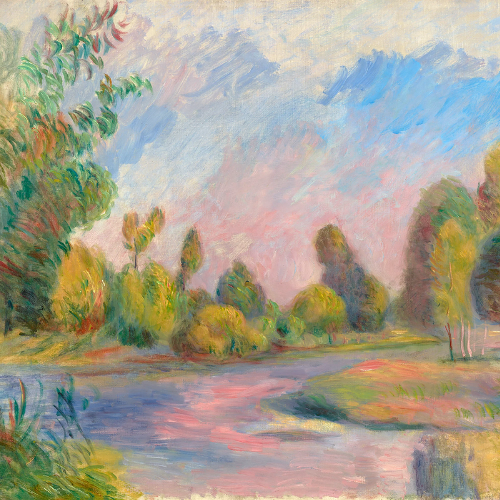Albert Bierstadt
1830-1902 • American
A member of the Hudson River School, Bierstadt's use of light, often referred to as “luminism,” is his trademark. Known primarily for his depictions of the American West, Bierstadt was the leading painter of the ever-expanding frontier during the 19th century. Today, the few Bierstadt works that become available at auction continue to bring in ever increasing prices.
Born in Solingen, Germany, Bierstadt’s family moved to Massachusetts when he was just two years old. In 1853, his blossoming interest in art lead him to formal study at the Düsseldorf School in Germany.
Upon his return to the United States, the artist’s subjects concentrated mainly on the New England area, until 1859, when he accompanied a land surveyor for the U.S. government to the western frontier. The sketches Bierstadt returned with became finished works that garnered him much financial success. Officially finding his niche, he would make numerous trips to the West throughout his career, creating paintings that detailed the bountiful beauty of the vast landscapes he encountered.
In the critical art circles of his day, Bierstadt did not fare well. Despite his commercial success, opponents of his work often considered his use of large canvases, light and romantic subject matter to be out of style and inappropriate with the tastes of the time. With the rise of Impressionism and the Boston School, public tastes also moved away from his highly detailed landscapes. Bierstadt eventually declared bankruptcy in 1895.







